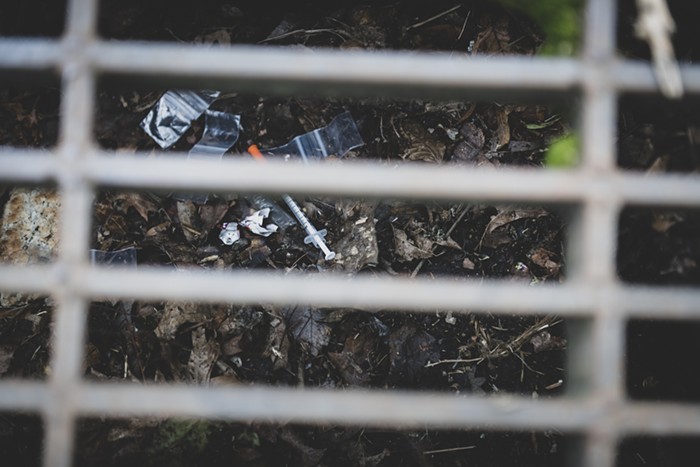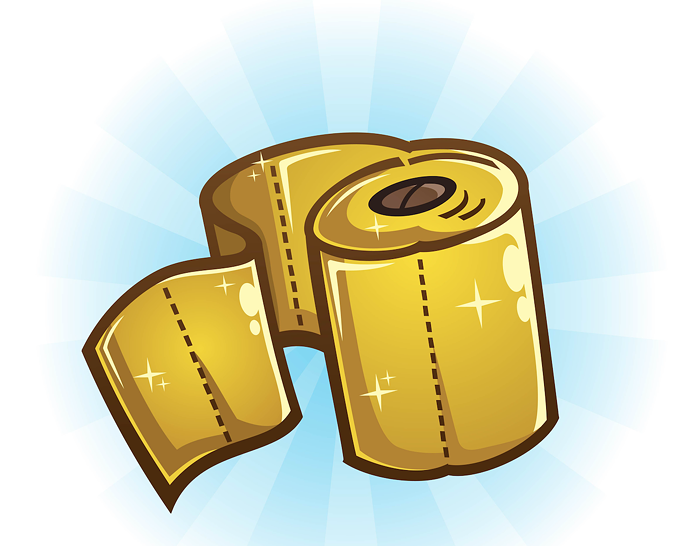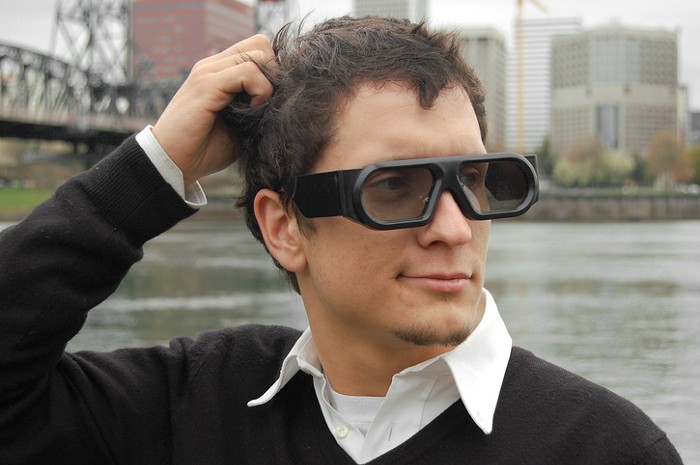
At least, you don’t need to bother signing up right now, even if one or more of these four shows sounds like it will be very much your type of shit. At the least, I’d wait to subscribe until more episodes drop so that you can binge a season in full—at the time of launch, only three episodes of each show will be available, with additional episodes dropping weekly. The one exception is Dickinson, of which all eight half-hour episodes will be ready from the get-go.
Actually, let’s start there. I’ve seen two full episodes of Dickinson, and found it utterly confounding. It’s a half-period, half-modern, sorta-comedy about the American poet Emily Dickinson, played by Hailee Steinfeld, who navigates the ultra-2019 dialogue with some aplomb but is by far the best thing going here, which isn’t saying a ton. This is a show in which the costuming and production design are richly designed to be period-appropriate, but characters say things like “psyched” and “so pimp.” When Emily writes a poem, the text flashes onscreen in gold script. (She writes everything in dazzling first drafts. “Nailed it,” she says after completing one.) In the first episode, she smokes a blunt with Death, played by Wiz Khalifa.
This is all very inventive, and it comes, presumably, from the laudable intention of trying to get teens interested in poetry. And look, fine, I am fully aware that I am not the target demographic. But the dialogue is flat whenever it isn’t outright horrendous, and the show does the cardinal sin of misusing the excellent Toby Huss, who plays Emily’s stern father, written as an overbearing ogre who forbids her from doing just about everything, including getting her poetry published in the college magazine. Huss’ natural likability just doesn’t mesh with his character’s actions—he’s simply a person who doesn’t make any logical sense. And as Emily’s mother, Jane Krakowski is outright terrible, something she's never been before. You hate to see it.
Again, this could work like gangbusters for somebody, and if that somebody’s you, I won’t judge. But reframing Dickinson as a frustrated 2019 teenager—actually, she’s probably in her early 20s, but she lives at home and behaves like a surly high-school kid—reeked to me of pandering. It’s all very “how do you do, fellow kids?” A big chunk of the plot is driven by Emily’s lesbian love affair with her brother’s fiancée, which is a worthwhile way of reframing Dickinson’s established biography, about which there are not a lot of concrete details. But when an episode ends with Emily having an orgasm to Mitski’s “Your Best American Girl” and treats it as some sort of profound moment, it feels like fan fiction in the laziest way.
Similarly bizarre is See, a post-apocalyptic saga that’s probably closer to fantasy instead of science fiction, despite taking place thousands of years in the future. The human race has been decimated by a virus, and the survivors have all lost their sight. Centuries later, one particular tribe is on the run from a Witchfinder General, who works in service of a cartoonishly evil queen. They’re looking—or smelling, I guess, since everyone’s blind—for a guy who can actually see, but he’s escaped into the forest primeval. (Or should that be re-primeval? In See’s world, nature has completely reclaimed the planet back from humans, although I’m not aware of the show having any environmental overtones.) Meanwhile, the fugitive’s kids are in the care of Boba Voss, played by Jason Momoa. The big secret is that these kids also have the power of sight, and the show positions them as superior to their blind tribespeople in almost every way—problematic, to say the least. The kids are able to educate themselves from a secret stash of books that includes Hop on Pop and To Kill a Mockingbird in remarkably well-preserved 20th-century editions. Could they restore humankind to its former glory?
The show comes from Steven Knight, whose track record is nuts: He wrote Dirty Pretty Things and Eastern Promises, created the shows Peaky Blinders and Who Wants to Be a Millionaire? (really), and was responsible for the what-in-the-absolute-fuck-ery of Serenity, the thriller from earlier this year that starred Matthew McConaughey and Anne Hathaway and boasted one of the most insane plot twists that has ever been in a movie, ever. And now, Knight has given us See.
It’s an ambitious, ridiculous, flabbergastingly self-serious trainwreck of a thing. And like a trainwreck, it’s hard to look away. Reportedly costing as much as Game of Thrones per episode, See is often pretty, with its backdrop of forested wilderness that looks awfully handsome on your smart TV. But this show is so dumb, so silly, and so utterly lacking in self-awareness that you have to wonder how the actors got through their lines without giggling or furiously calling their agents. Momoa, in Khal-Drago-but-kindly mode, actually comes off okay in this over-the-top milieu, but a new "Golden Raspberry Award for Streaming TV" needs to be invented for Sylvia Hoeks, who plays the evil queen and is giving one of the strangest, most garish performances that’s ever captured on film or digital. When we meet her, she’s masturbating as a form of “prayer” (this is two Apple TV+ shows in a row that prominently feature a female orgasm) and the performance only escalates from there. I can’t describe what she’s doing exactly—it’s like she decided to inhale whenever she speaks—but it’s very difficult to watch.
And there’s more craziness! If you’ve ever wanted to see a large-scale battle sequence in which everyone is blind, you will find it in See. Sometimes the characters speak in made-up words and clicks, and sometimes they speak in ordinary English. There’s a smattering of incest. And for some reason, Alfre Woodard is kicking around in a small and unimportant role. Oh, and there’s also a character referred to as the “Shadow”—an eavesdropping spy whose naked body is covered entirely in white paint (to make her quieter, maybe?) as she silently skulks, writhes, and lunges around the village like she’s an extra in Cats. I almost want you to sign up for Apple TV+ just so I have someone to talk to about it.
The best show is also the least interesting. For All Mankind is a stately drama whose pitch was reportedly “Mad Men at NASA,” and it plays out exactly as that thumbnail description suggests. Taking place during an alternate-history 1969, the show wonders what would happen if the Soviets beat the US to the moon, and goes from there.
It’s a polite, well-crafted, easy-to-watch thing that’s nevertheless pretty bland, and the otherwise capable cast is led by Joel Kinnaman (Suicide Squad, Altered Carbon), a leading man who still has yet to prove he’s an actor and not a clotheshorse. Coming from Ronald D. Moore (Battlestar Galactica), the show is at its best when it works as a thought experiment, but when it's a period drama about astronaut husbands and repressed wives, as it is much of the time, things gets more than a little snoozy. Still, it’s also the kind of show you can watch with your dad over Thanksgiving break without either of you getting too itchy.
Which brings me to The Morning Show. The highest-profile show on Apple TV+’s roster, it’s a ludicrously expensive drama starring Jennifer Aniston, Reese Witherspoon, and Steve Carell. And… I wasn’t really able to watch it. If you follow any TV critics on Twitter, you might have noticed some of them cryptically (or not-so-cryptically) complaining about the site Apple set up for their advance screeners. I had problems with it, too—specifically, trying to watch this show on an older laptop and encountering stuttering, ultra-laggy video. (The sound was perfect, though.) By the time I switched to a slightly newer computer, I had used up my allowed quota of three login attempts—a quota I didn’t know existed until I exceeded it—and did not get a reply from the PR team when I asked for help.
So my experience of The Morning Show is only of the debut episode’s first 15 minutes or so, viewed through very choppy video. It seemed… fine? It looked like a slick, big-budget drama that we might’ve gotten on movie screens a decade or two ago but has become extinct in this day and age—a James L. Brooks/Aaron Sorkin-y kind of thing, but without the crackling dialogue those two can muster on their better days. Reese Witherspoon was in full firecracker mode; I remember a scene that had her arguing with a guy about coal and ending the conversation with a full-volume shriek. Aniston’s character seemed sedate and bitchy. And Carell shouted a lot and smashed a flatscreen TV set.
Hmm. Actually, maybe Apple TV+ was trying to tell us something with that particular scene, perhaps subliminally suggesting that broadcast TV’s time is over and streaming has already won the day. At any rate, it is weird that Apple’s biggest, most expensive swing in this new streaming endeavor is a show about broadcast television, one that seemed—in my limited experience—to be glossily reveling in TV’s glory days and doing very little to dissect or interrogate them. I could be wrong, certainly. After all, I didn’t see very much of The Morning Show. But I didn’t see very much in it that made me want to keep watching, either.
Apple TV+ (and The Morning Show, For All Mankind, Dickinson, and See) debuts this Friday, November 1. Streaming will never be the same.


















